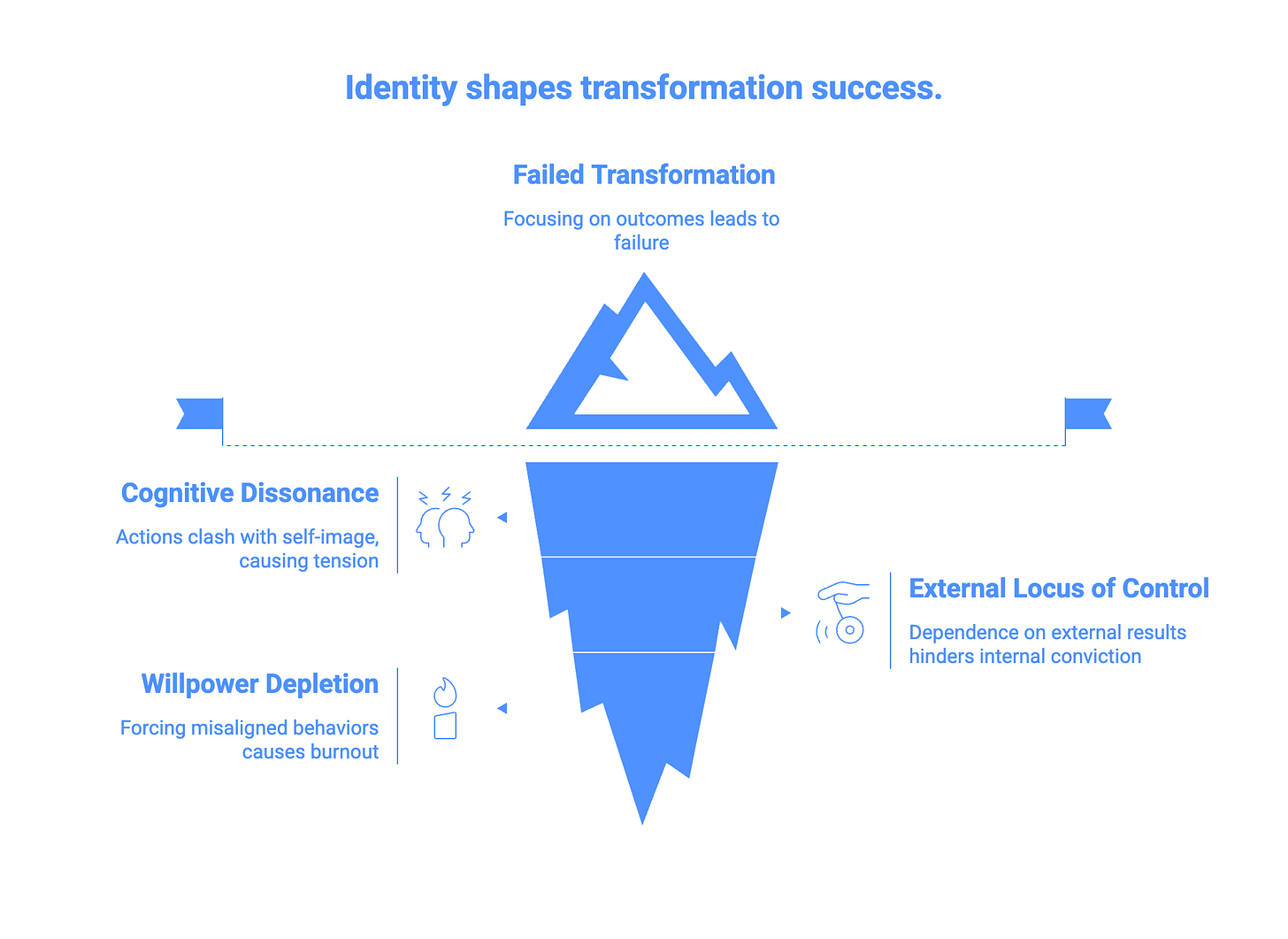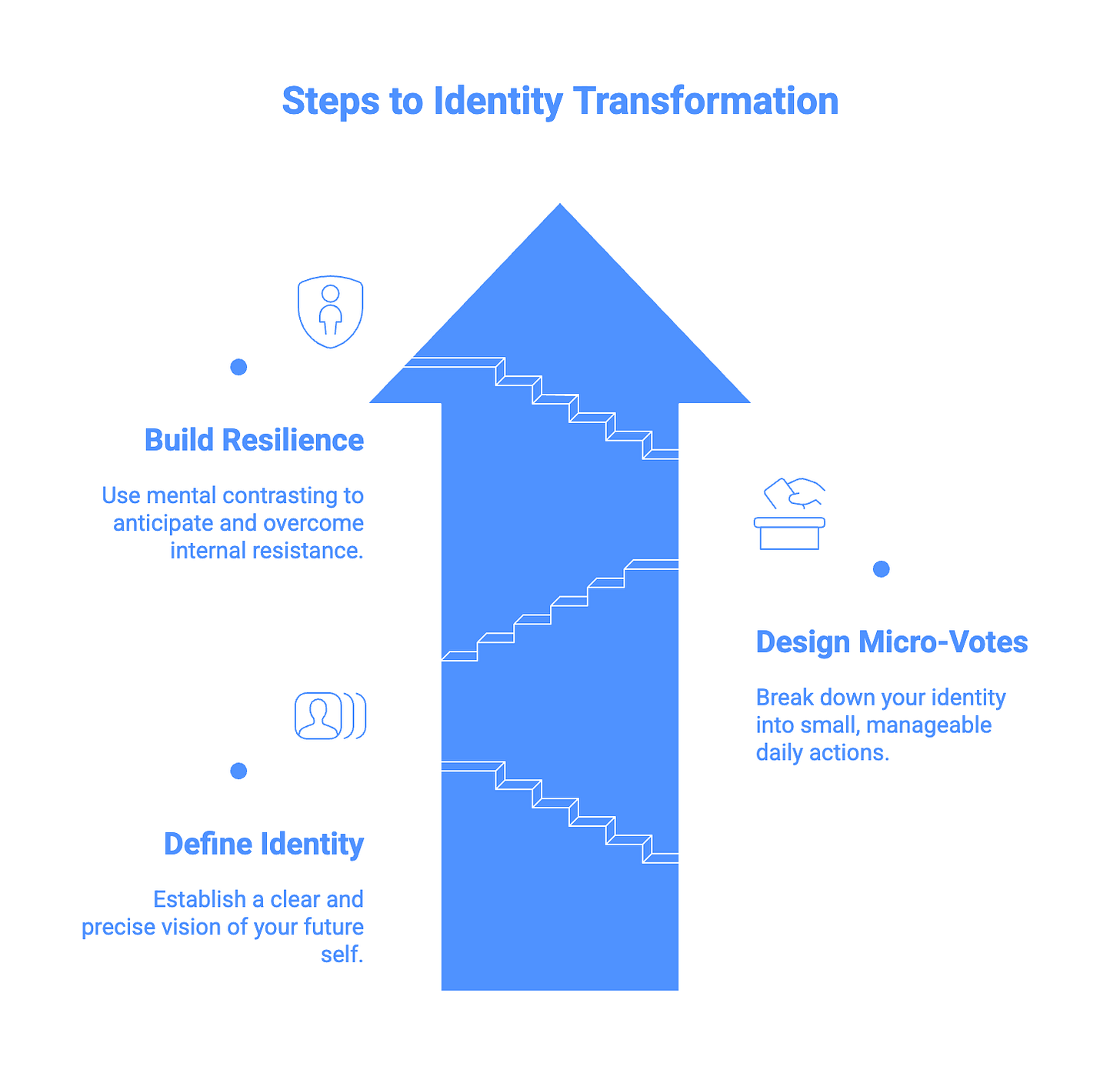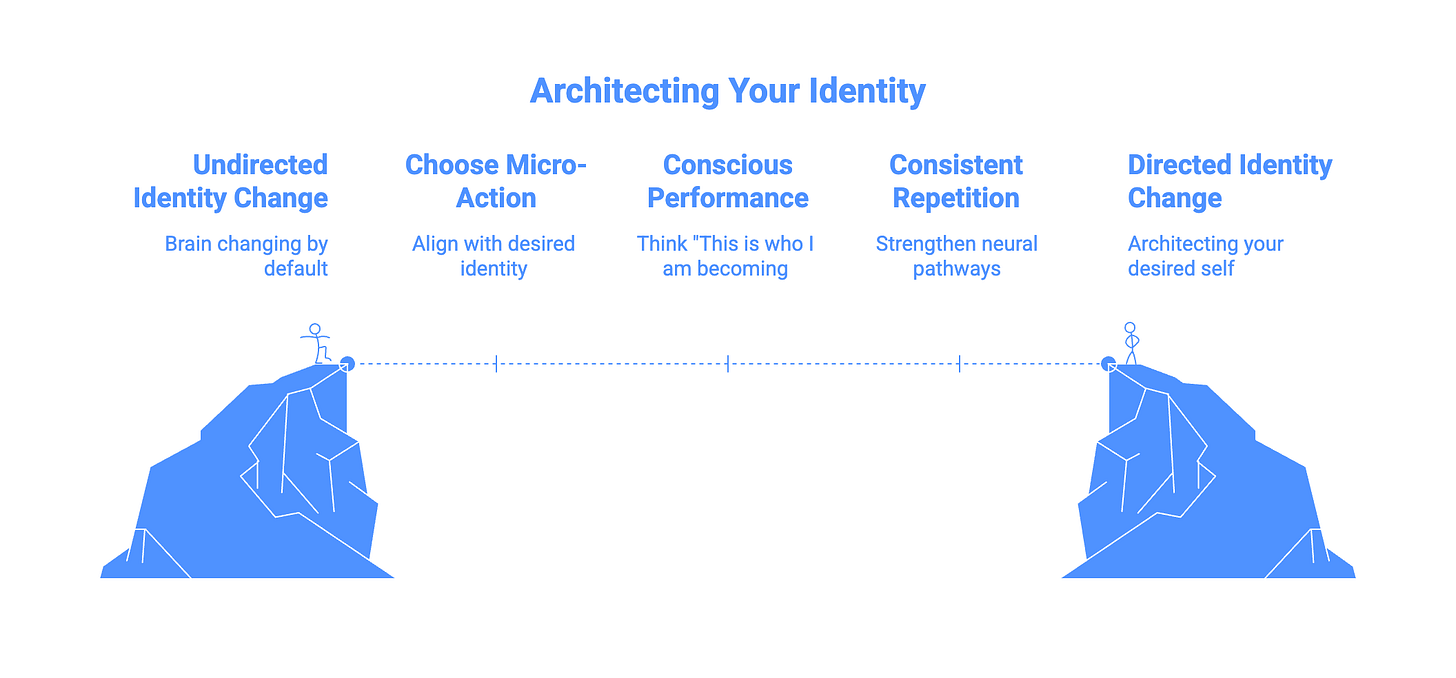3 Small Daily Changes That Rewire Your Brain
Simple actions that make new habits feel automatic and natural
Hi Kwik Brain,
In this article, I'll explain how to architect your future self through micro-identity shifts and why it's the most powerful skill for lasting change.
Have you ever wondered why some people seem to effortlessly transform their lives while others struggle for years with the same habits? The answer isn't willpower, motivation, or even goal-setting. It's something much simpler yet profoundly more powerful: micro-identity architecture.
Your brain doesn't distinguish between who you are and who you think you are. Every small action you take is a "vote" for the type of person you're becoming. When you shift from asking "What do I want to achieve?" to "Who do I want to become?" everything changes.
The hidden science behind identity transformation
Recent neuroscience reveals something remarkable about how we change. Your brain's neuroplasticity means that consistent, small behaviors literally rewire neural pathways through processes like myelination. Each tiny action aligned with your desired identity strengthens specific brain connections, making those behaviors more automatic over time.
But here's what most people miss: your brain has an inherent "self-bias" that prioritizes self-related information. The medial prefrontal cortex and posterior cingulate cortex light up when processing identity-relevant actions. This means framing behaviors as expressions of "who I am" rather than "what I do" creates deeper neural integration.
Research shows that individuals who focus on identity-based change report lasting transformation that works better under stress. Why? Because when cognitive resources are depleted, your brain defaults to established identity-aligned behaviors rather than requiring constant willpower.
Why most people fail at lasting change
Unfortunately, many people struggle with transformation because they focus on outcomes instead of identity. They say "I want to lose weight" rather than "I am a healthy person." This creates three critical problems:
Problem #1: Cognitive dissonance
When your actions don't match your self-image, your brain experiences uncomfortable tension. Most people resolve this by reverting to old behaviors that match their existing identity.
Problem #2: External locus of control
Focusing on outcomes makes you dependent on external results rather than building internal conviction about who you're becoming.
Problem #3: Willpower depletion
Trying to force behaviors that don't align with your identity creates constant internal struggle, eventually leading to burnout and failure.
But here's the breakthrough: you can leverage these same psychological mechanisms to accelerate positive change.
The micro-identity architecture system
Step 1: Define your future identity with laser precision. Move beyond vague goals. Instead of "I want to be healthier," declare "I am a person who moves daily and nourishes my body." This activates your brain's self-referential processing networks, making the identity feel more real and achievable.
Step 2: Design micro-votes for your new self. Break your desired identity into incredibly small daily actions. If you want to become a writer, start with one sentence per day. These tiny behaviors serve as "votes" for your new identity, leveraging self-perception theory to gradually shift how you see yourself.
Step 3: Use mental contrasting to build resilience. The WOOP framework (Wish, Outcome, Obstacle, Plan) helps you anticipate internal resistance. When you imagine your desired identity (wish) and its benefits (outcome), also identify internal obstacles like self-doubt or old habits. Then create "if-then" plans: "If I feel resistance, then I will remind myself that I am becoming the type of person who does this."
Your transformation toolkit
The power of authentic pride
Self-conscious emotions like pride act as internal feedback mechanisms. When you complete a micro-action aligned with your desired identity, consciously acknowledge the authentic pride you feel. This positive emotion strengthens the neural pathways associated with your new behaviors.
Visualization as neural rehearsal
Regularly visualize yourself embodying your new identity. Your brain can't fully distinguish between vividly imagined experiences and real ones, so mental rehearsal literally prepares your neural circuits for success.
The habit loop advantage
As behaviors become automatic through the basal ganglia's habit loop (cue, routine, reward), they require less conscious effort. This frees up mental energy while making your new identity feel natural and effortless.
Measuring your neural transformation
As you implement micro-identity shifts, you'll notice several key changes:
Actions feel less forced and more natural
Internal resistance decreases significantly
You catch yourself naturally behaving in identity-aligned ways
Others begin reflecting your new identity back to you
Stress doesn't derail your progress as easily
The research is clear: identity transformation happens through consistent micro-shifts that accumulate into profound change. Your future self isn't built through dramatic overhauls but through small, daily choices that declare who you're becoming.
Your 60-second daily practice
Starting today, choose one micro-action that aligns with your desired identity. Make it so small it feels almost silly not to do it. Then perform this action while consciously thinking "This is who I am becoming."
That's it. Sixty seconds of identity-aligned action, performed consistently, will begin rewiring your brain's self-concept. Each repetition strengthens the neural pathways that support your transformation.
Remember: you're not trying to achieve something external. You're becoming someone new. Every small choice is an opportunity to vote for the person you're architecting.
Your brain is already changing. The question is: are you directing that change, or is it happening by default?
What micro-identity shift will you make today?
Additional resources
For deeper exploration:
Self-concept training research - Neuroscience evidence for identity-based change
Identity-based habits framework - James Clear's systematic approach
Self-Determination Theory - The psychology of intrinsic motivation
One of my latest videos:








I am!
This is my favorite newsletter from you.
I’ve already been applying it in some areas but these days I just got a big “external vote” against what I was becoming (in a sea of mine and others’ “good votes”) which made it quite confusing and chaotic – just knowing about this made the solution clear as day!
Thank you so much! You are a lifesaver!